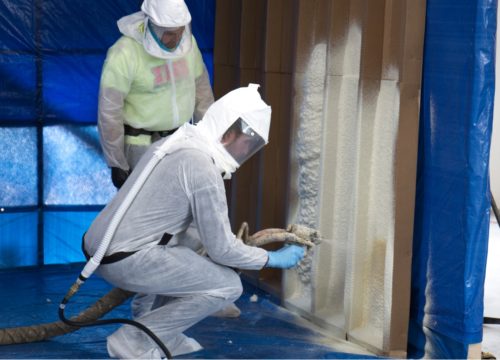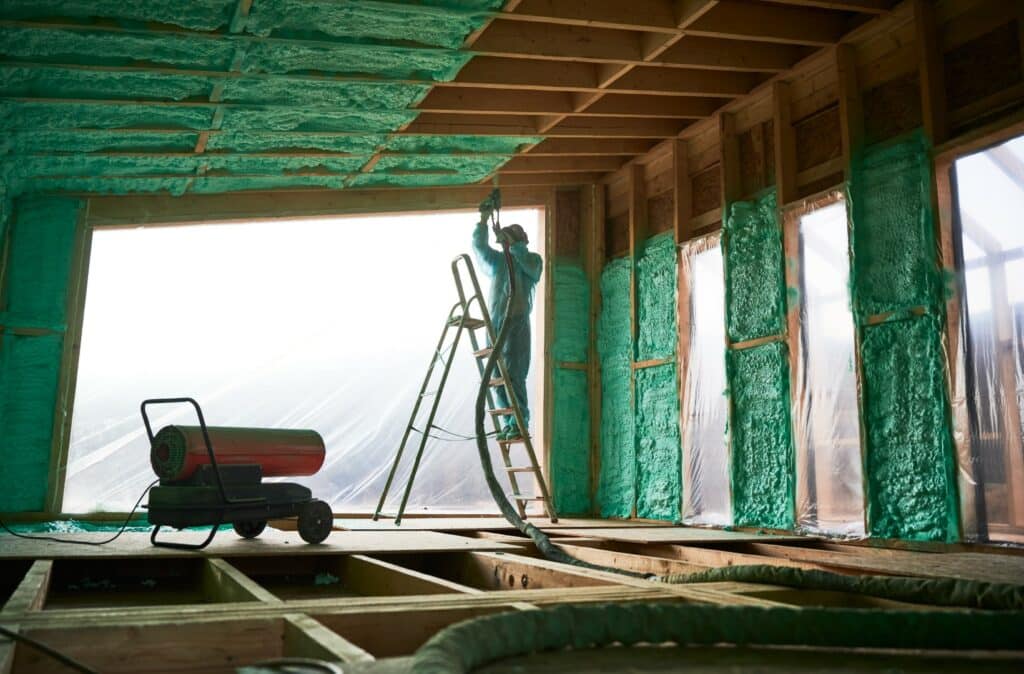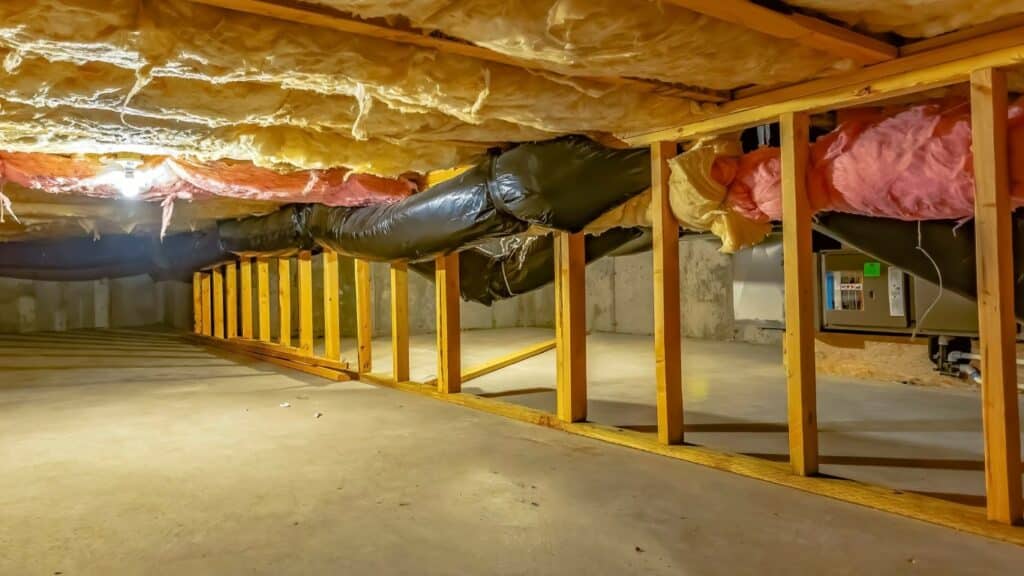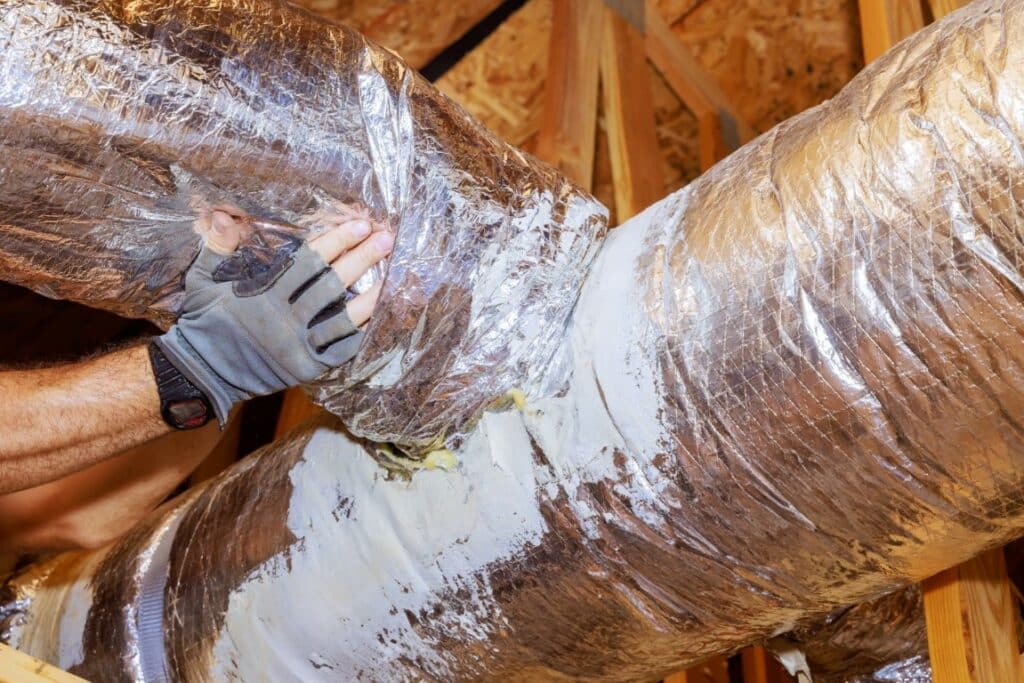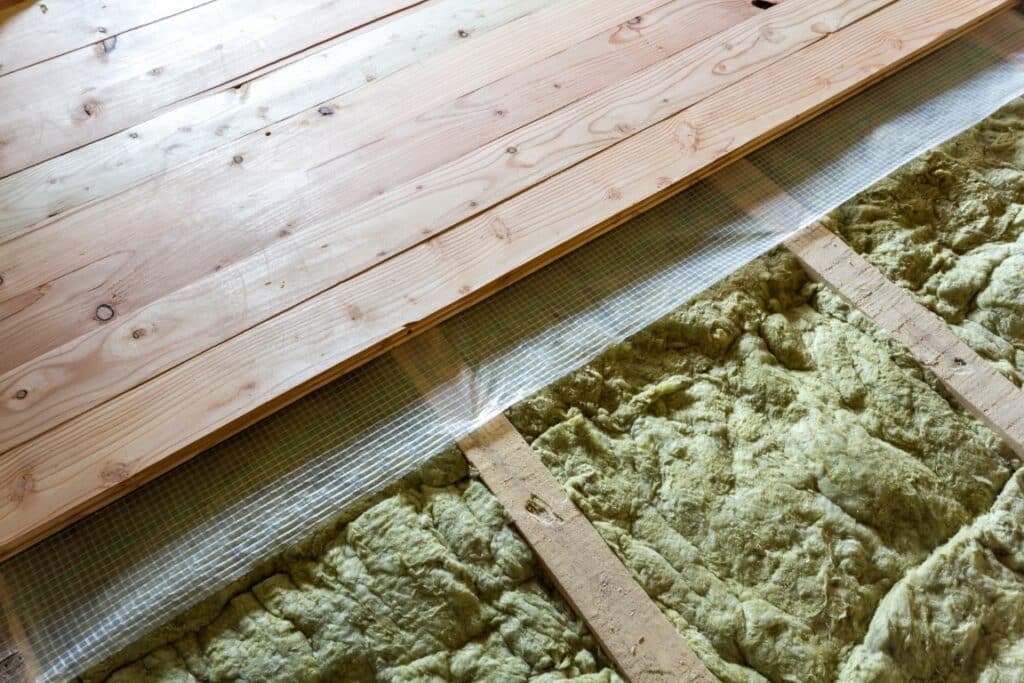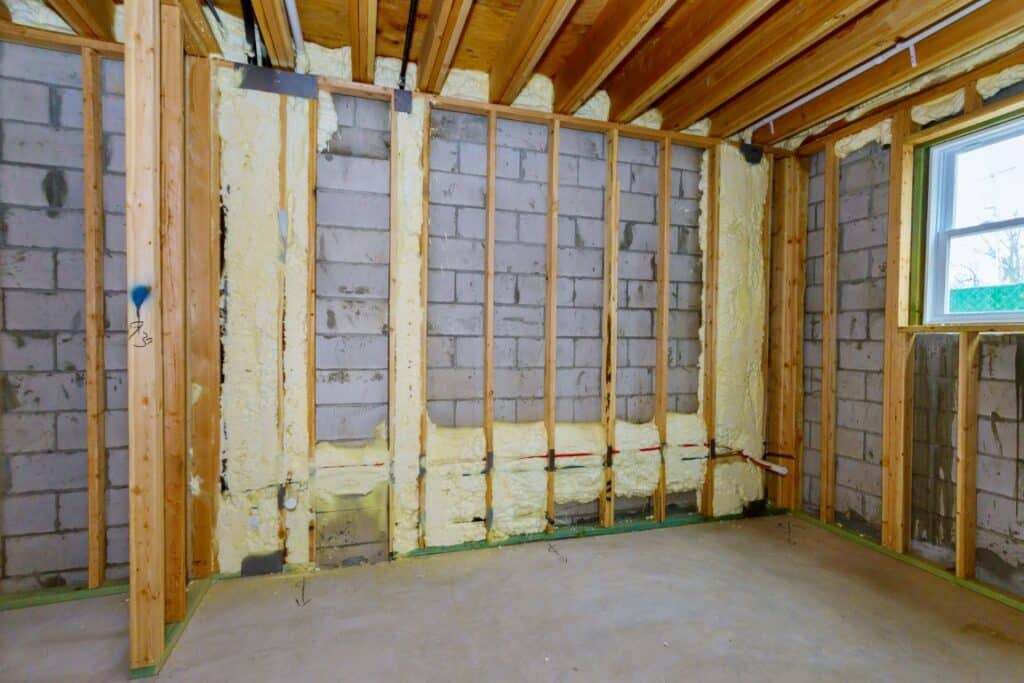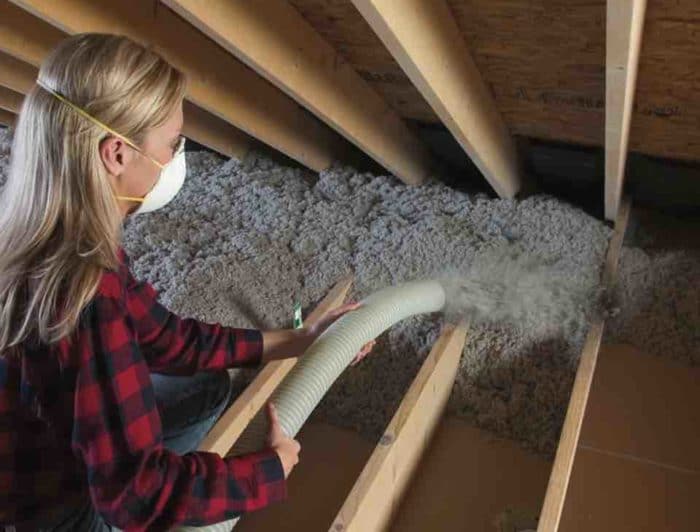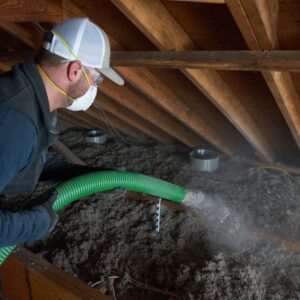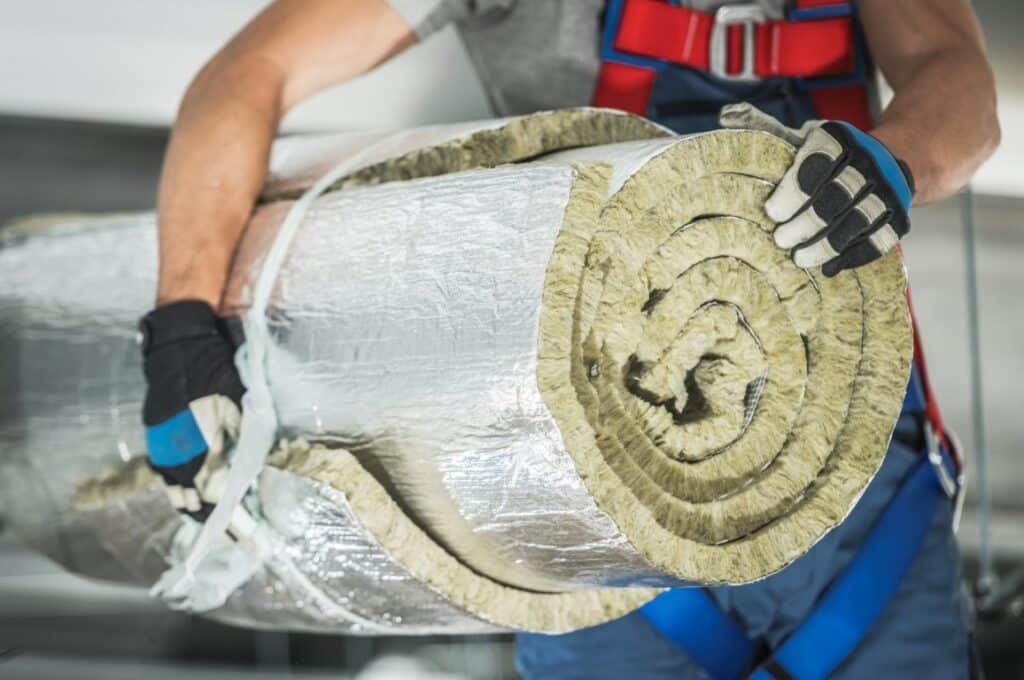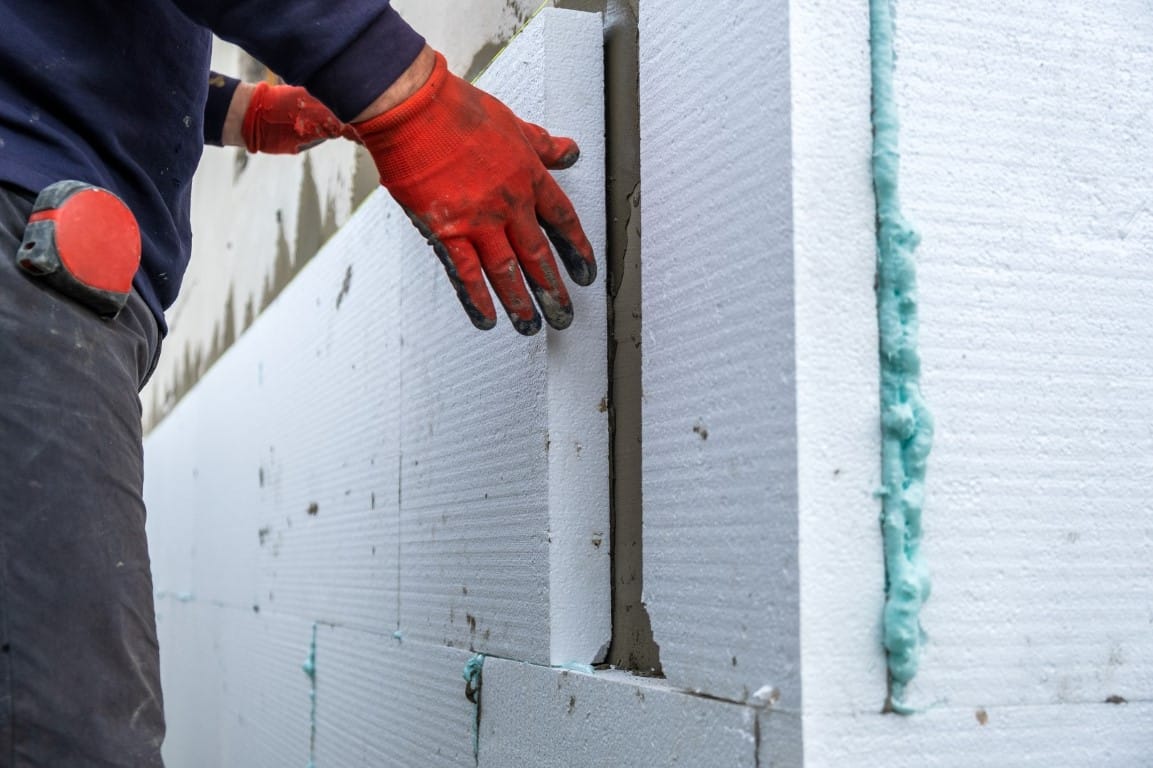Spray Foam Insulation Rebates 75-100% off costs.


Maximize your home's insulation efficiency with spray-foam insulation and reap the benefits. Take advantage of the limited-time offer from Energize Connecticut programs, covering $1.70 per square foot for Eversource and United Illuminating customers.
Spray foam insulation offers an exceptional solution for sealing gaps, enhancing thermal performance, and reducing unwanted noise. Ideal for a variety of spaces including attics, walls, and crawlspaces, our spray foam solutions are tailored to meet the unique needs of your home.
Types and Properties of Spray Foam Insulation
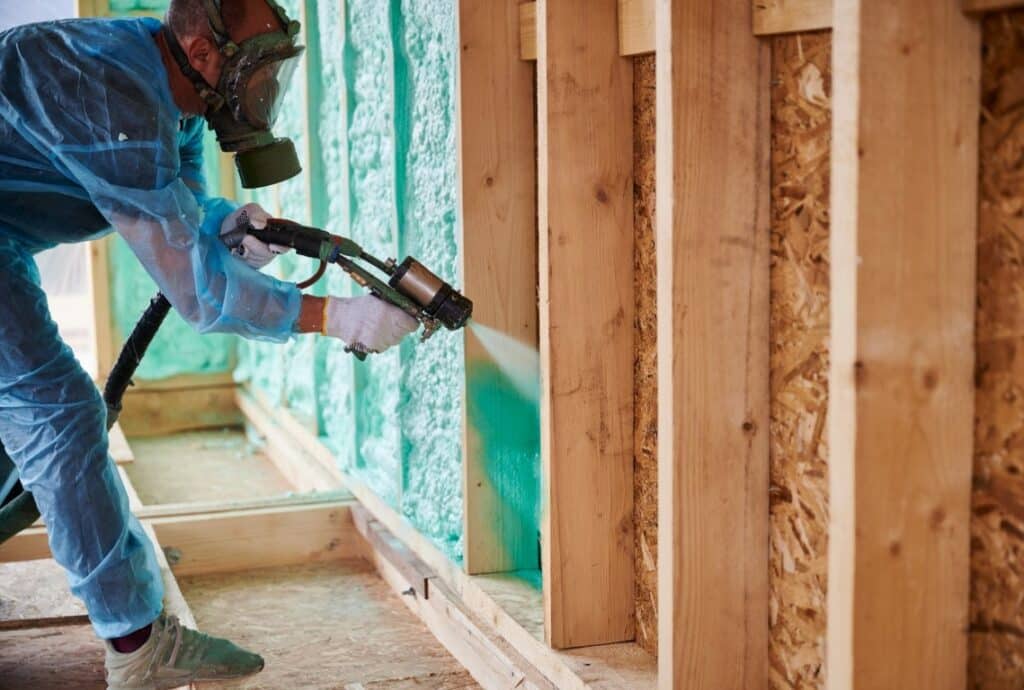
Installation of Spray Foam Insulation
Installing spray foam insulation involves a precise and controlled process. A two-component mixture is sprayed into the desired area, where it rapidly expands to form a continuous, airtight seal. This method is suitable for a variety of applications including walls, roofs, floors, and around HVAC systems.
The process requires skilled professionals equipped with the necessary safety gear, as the chemicals involved can be hazardous before they cure. The installation involves:
- Preparation: Removing any old insulation and preparing the surface for application.
- Mixing: Combining the two chemical components that react to form the foam.
- Application: Spraying the mixture into the target areas, where it expands and hardens.
- Curing: Allowing the foam to set, which can take several hours.
The versatility of spray foam makes it ideal for insulating irregular shapes and sizes, offering a comprehensive solution that traditional materials cannot match.

Cost of Spray Foam Insulation
Spray foam insulation is generally more expensive upfront than traditional insulation types like cellulose, rigid foam, and batt insulation. The cost depends on several factors including the type of spray foam (open-cell vs. closed-cell), the thickness applied, and the area being insulated.
Closed-cell foam is typically more expensive due to its higher R-value and superior moisture resistance. Open-cell foam, while less costly, may not be suitable for every application due to its lower R-value and inability to block moisture effectively.
When compared to other insulation types:
- Cellulose and Batt Insulation: These are usually less expensive than spray foam but do not provide the same level of air sealing or moisture resistance.
- Rigid Foam: While offering a higher R-value than some batt insulations, rigid foam does not conform to irregular surfaces as well as spray foam and may leave gaps if not properly installed.
Despite the higher initial cost, spray foam can result in significant energy savings over time due to its superior air sealing and insulating properties. Homeowners should also consider potential rebates and tax incentives that can offset the initial investment. Additionally, the improved comfort and reduced energy bills often justify the cost difference compared to other insulation methods.
Where to Use Spray Foam Insulation
-
Spray Foam Insulation for Attics

Spray Foam Insulation for Attics
Spray foam insulation in attics creates an airtight seal, significantly reducing heat loss and preventing moisture issues, making it an excellent choice for temperature control and energy efficiency.
-
Spray Foam Insulation for Walls

Spray Foam Insulation for Walls
Spray foam insulation is ideal for walls due to its expansive nature, filling every nook and cranny to create an airtight seal and provide excellent thermal resistance.
-
Spray Foam Insulation for Basements

Spray Foam Insulation for Basements
In basements, spray foam insulation can be applied to walls to prevent energy loss, reduce moisture infiltration, and protect against mold, enhancing comfort and indoor air quality.
-
Spray Foam Insulation for Ceilings

Spray Foam Insulation for Ceilings
Applying spray foam insulation on ceilings can effectively minimize air leaks and thermal bridging, thereby improving overall home energy performance and reducing unwanted noise from above.
-
Spray Foam Insulation for Crawlspaces

Spray Foam Insulation for Crawlspaces
Spray foam insulation in crawl spaces seals off air leaks and insulates against extreme temperatures, providing a moisture barrier that prevents mold growth and improves the overall environment.
-
Spray Foam Insulation for Ducts

Spray Foam Insulation for Ducts
Insulating ducts with spray foam can prevent air loss, ensuring efficient heating and cooling system performance, which in turn reduces energy costs and improves indoor comfort levels.
-
Spray Foam Insulation for Floors

Spray Foam Insulation for Floors
Spray foam insulation applied under floors can help maintain consistent indoor temperatures, reduce drafts, and enhance comfort, especially in homes elevated above the ground.
-
Spray Foam Insulation for Foundations

Spray Foam Insulation for Foundations
Utilizing spray foam insulation on foundation walls can significantly reduce heat transfer, deter moisture intrusion, and contribute to the structural integrity of the home.
Qualify for Spray Foam Insulation Rebates by Getting a Home Energy Audit
$0
$0
Average Annual Energy Savings$0
Weatherization Service Value$0
Average 1st Year SavingsRebates for Spray Foam Insulation
| Energize CT Rebate: $1.70 per Square Foot | |
|---|---|
| Avg. Initial Cost | $1500-$10000 |
| Max Rebate | N/A |
| Avg. Lifetime Savings | $4000 |
Claim up to $1.70 per square foot on approved insulation projects recommended during a Home Energy Solutions assessment.This may cover between 75-100% of insulation costs!
| IRA Tax Credit: % of Costs | |
|---|---|
| 25C Max Credit | $1600 |
| 25D Max Credit | Uncapped |
The Inflation Reduction Act tax credit for weatherization in Connecticut offers homeowners a 30% tax credit for eligible projects, with a maximum claim of $1,200 per year. It covers insulation, air sealing, doors, windows, and energy audits. Weatherization reduces energy waste, lowers bills, and improves home comfort while decreasing carbon emissions.
| IRA Electrification Rebate: $1600 | |
|---|---|
| Upfront Discount | 50%-100% of Costs |
| Avg. Initial Cost | N/A |
Connecticut homeowners may be eligible to claim up to $1,600 for their weatherization project through the Inflation Reduction Act Electrification Rebate program, depending on their income. Low-income households can receive 100% coverage of weatherization costs, while moderate-income households can receive 50% coverage. (The total cap for Electrification Rebates across all qualified projects is $14,000.)
Frequently Asked Questions about Spray Foam Insulation
Spray foam insulation creates an airtight envelope within the building structure, effectively sealing against convective heat transfer and preventing heat from escaping through gaps in the building envelope. It comes in two main types: closed-cell foam and open-cell foam, each with different properties and applications. Closed-cell foam provides stronger resistance against moisture and air leakage, while open-cell foam is lighter and less expensive.
There are two broad categories of foam spray insulation solutions: closed-cell and open-cell. In closed-cell foam insulation, cells are closed and filled with a gas allowing the foam to expand and fill the space around it. The high-density cells provide for a higher R-Value. Alternatively, the spongy, open-cell foam insulation is less dense. Open-cell foam insulation spray is cheaper but more likely to absorb water, and has a lower R-value and is less suitable in high moisture areas like basements. Open and closed cell foam spray insulation comes in a variety of chemistries including: Cementitious, Phenolic, Polyisocyanurate (polyiso), Polyurethane Icynene and Tripolymer, each conferring unique properties.
At HCP we prefer to opt for the greenest solutions wherever possible and think the best guidance is to use spray foam strategically and sparingly. Spray insulation is very versatile and can be used in a host of locations. From enclosed existing walls, open new wall cavities, unfinished attic floors and even existing finished areas. Closed-cell spray also has a very high R-value. There are however more cost-effective, safer and greener solutions to insulate many of those locations without the risks of toxicity and off-gassing. We advise limiting the use of foam to hard-to-reach and obstructed areas and limited localized sealing application.
Spray insulation expands to fill even the smallest surrounding cavities, creating an effective air barrier. It is ideally suited to fill irregularly shaped areas, and filling gaps around obstructions. These properties make spray foam insulation very efficient at reducing air leakage in holes and cracks, especially around electrical and plumbing penetrations.
Open-cell spray foam insulation has an R-value between R-3.5 to R-3.6 per inch. In other words, filling a 2×4 cavity yields about an R-13. Closed-cell spray foam has a far better R-value at about R-6.5-7 per inch.
During installation, a two-component mixture is sprayed into wall cavities or blown into holes drilled into a finished wall. The foam expands and fills the cavity, providing insulation and air sealing. Slow-curing liquid foams are also available for empty wall cavities. The mixture hardens and cures, dissipating any volatile compounds. The cost of spray foam insulation varies based on the type, composition, and installation methods required.
Spray foam insulation creates an airtight seal, effectively blocking air movement through gaps and cracks in the building envelope. This prevents convective heat transfer and reduces energy loss, making it a highly effective air sealing solution.
Home Comfort Practice offers insulation financing options with rates as low as 0%. Their financing experts can help you explore the best options to finance your insulation project and make it more affordable for you.
Other Types of Insulation
-
Blown Cellulose Insulation

Blown Cellulose Insulation
Blown-in cellulose is time-tested, fire-resistant and very cost effective.
Learn More -
Blanket/Batt Insulation

Blanket/Batt Insulation
Blanket/Bat/Roll insulation comes in a variety of materials and shapes providing even insulation levels with multiple compatible surfaces.
Learn More -
Rigid/Foam Insulation

Rigid/Foam Insulation
Rigid foam insulation is an excellent option for insulating flat surfaces and can be cut to size to fit exactly within or on top of gaps.
Learn More


